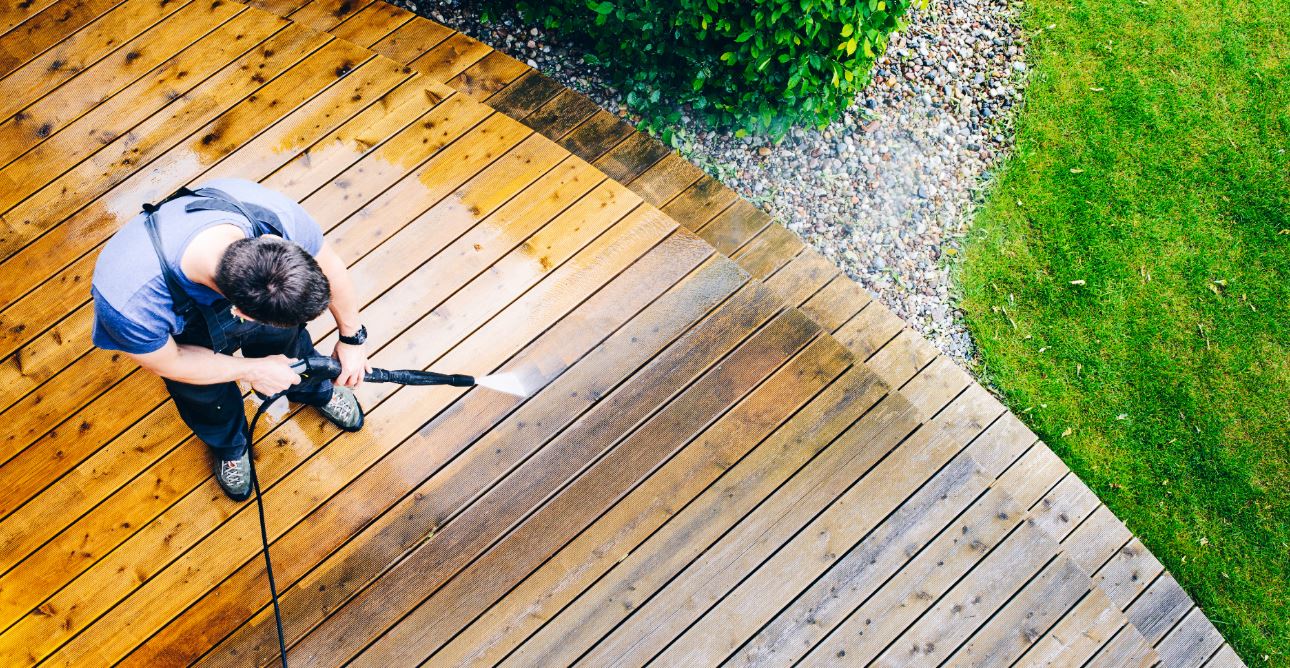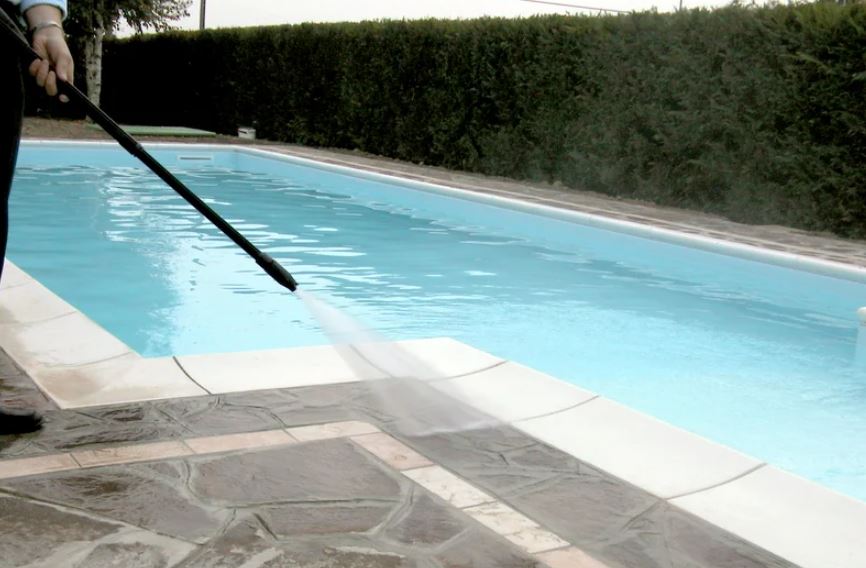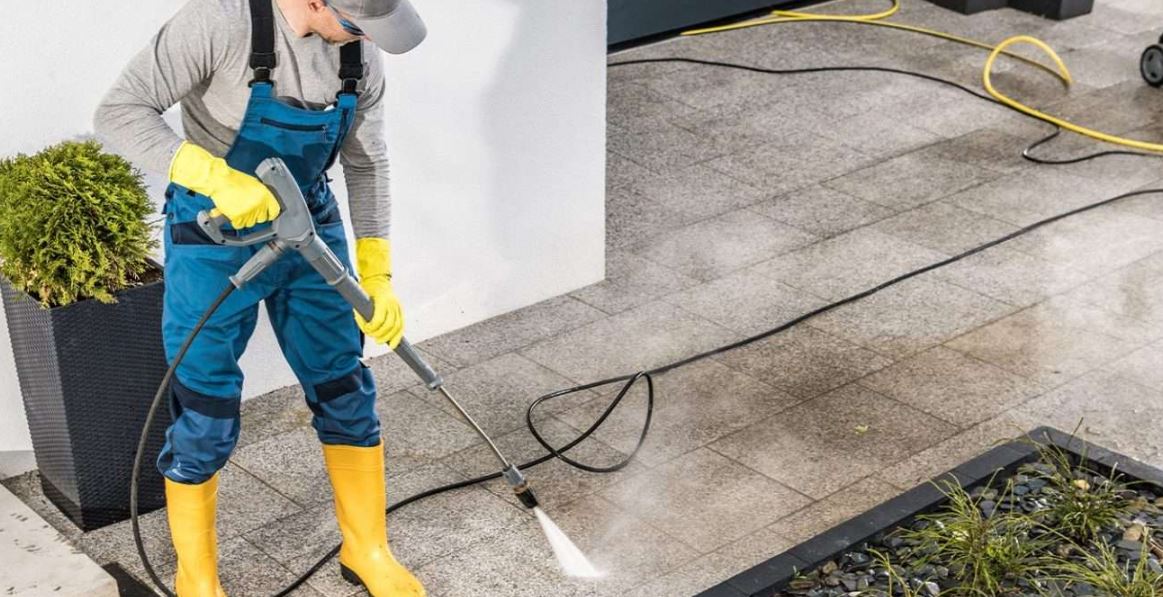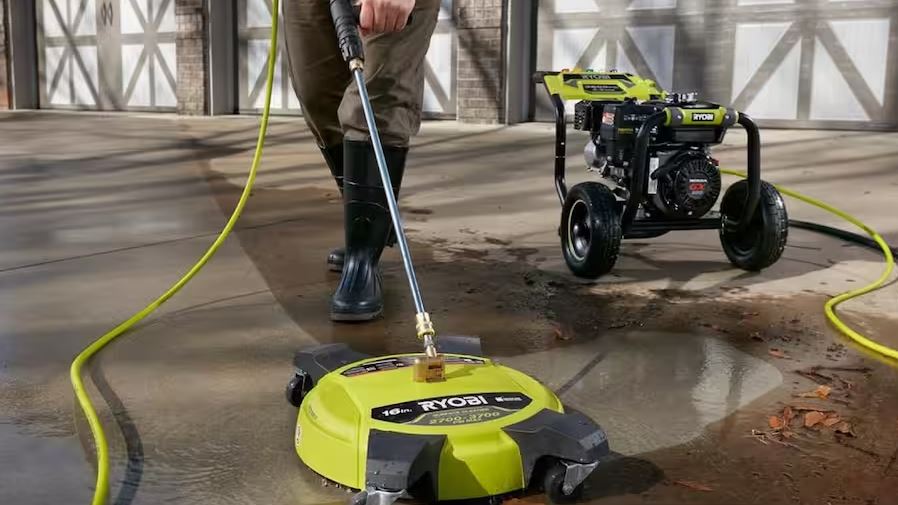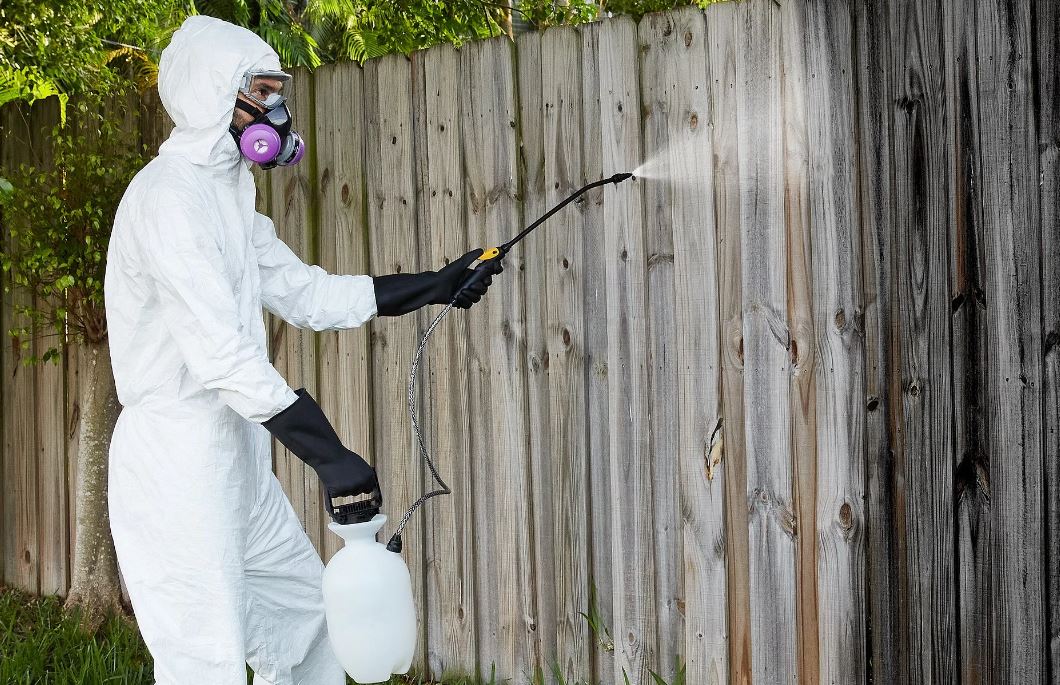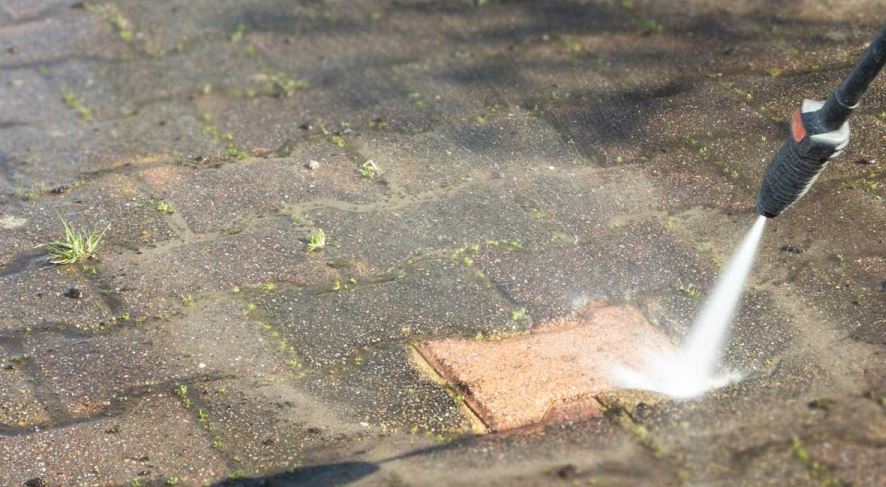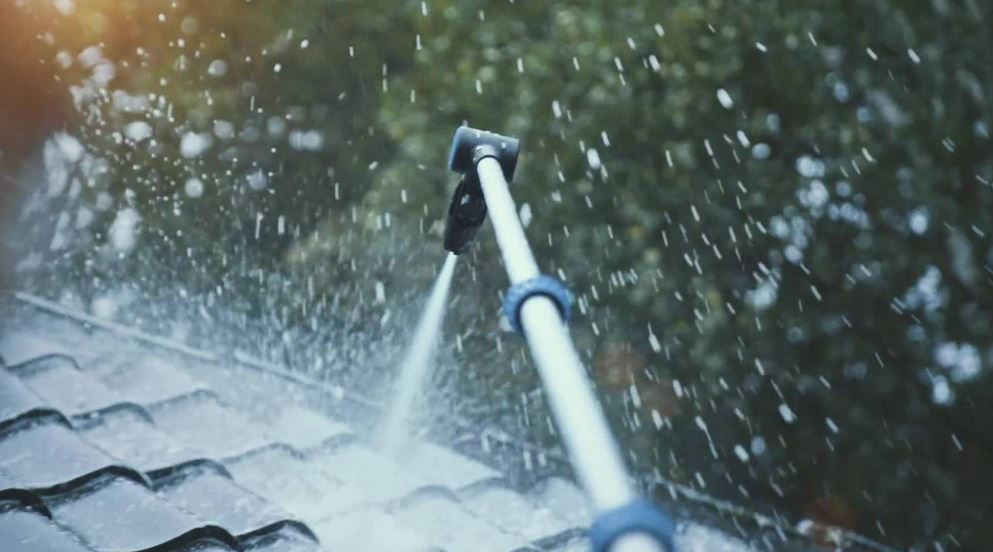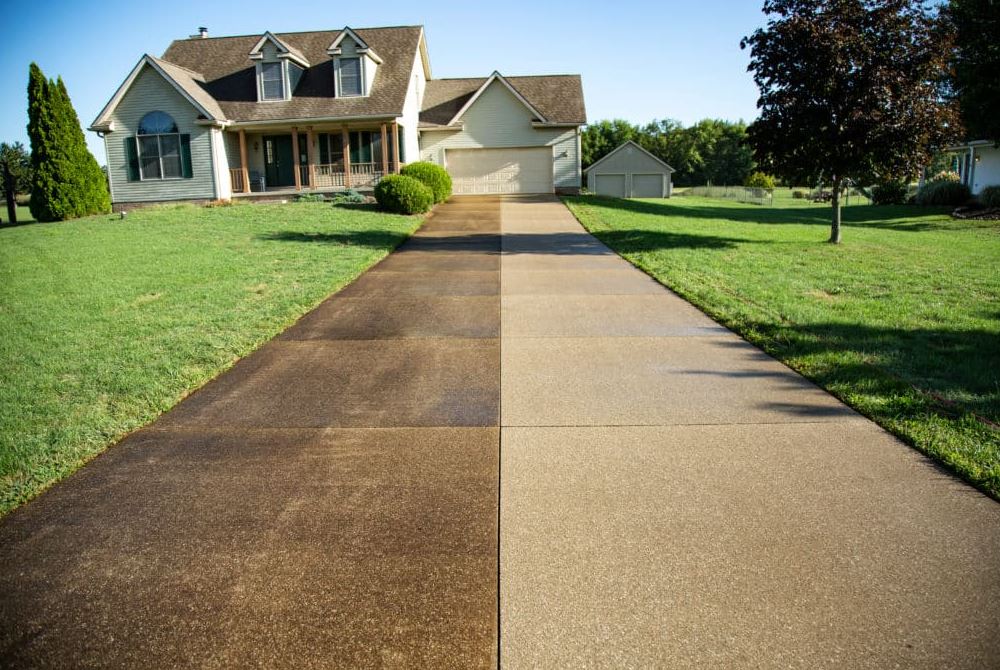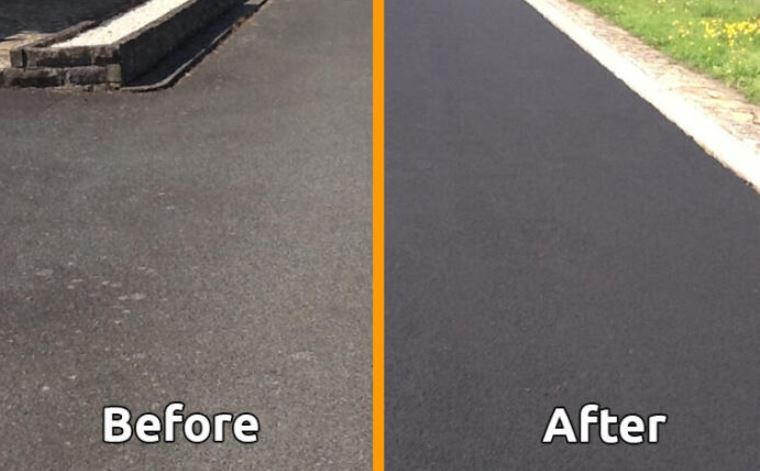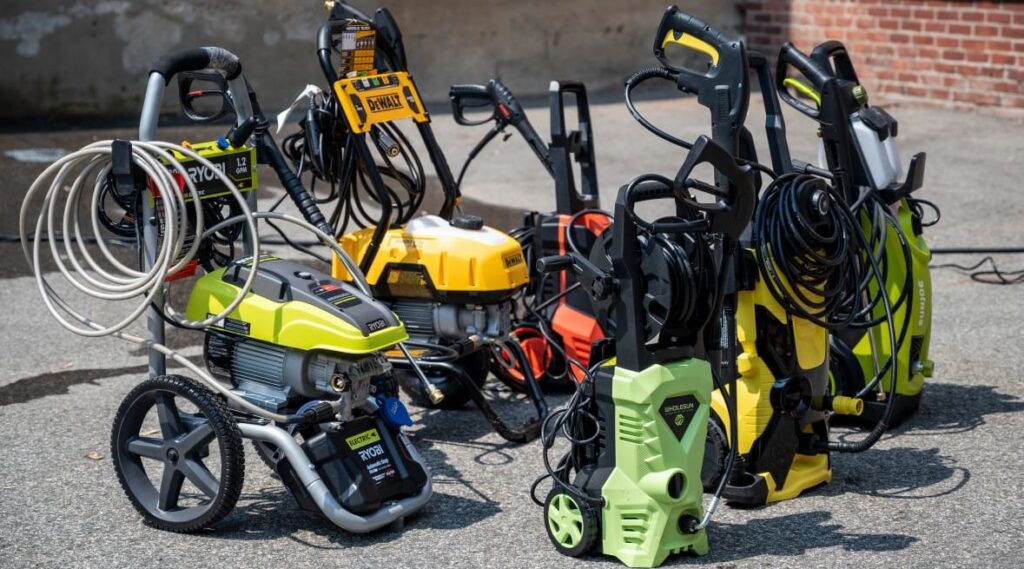Are you looking to breathe new life into your outdoor space?
Deck restoration with high-pressure cleaning might be the answer you've been searching for.
This comprehensive guide will explore the importance of maintaining your deck, how high-pressure cleaning can help restore, and the step-by-step process involved.
Discover the benefits of high-pressure cleaning, precautions to take, and how this simple yet effective method can revitalise your deck and enhance the appearance of your outdoor area.
What Is Deck Restoration?
Deck restoration rejuvenates and enhances outdoor spaces by transforming weathered decks and patios to their former glory.
Through deck restoration, the worn-out and tired appearance of wooden surfaces can be completely revitalised, bringing back their natural beauty. This not only adds aesthetic appeal to the outdoor area but also extends the lifespan of the deck or patio. By addressing issues like discolouration, splintering, and general wear and tear, a restored deck becomes a safe and inviting space for relaxation and entertainment. In addition to improving the visual appeal, the restoration strengthens the deck's structural integrity, ensuring its durability in changing weather conditions.
The Importance of Maintaining Your Deck
Maintaining your deck is crucial for preserving its structural integrity, enhancing outdoor areas, and increasing the longevity of exterior surfaces.
Regular deck maintenance safeguards your outdoor space and prevents costly repairs by addressing issues early on. You can thwart potential damage from weather elements, mould, and pests by routinely inspecting and treating your deck. A well-maintained deck boosts the aesthetic appeal of your property, making it an inviting place for relaxation and entertaining guests. Taking the time to care for your deck will pay off in the long run, ensuring a safe and enjoyable outdoor environment for years.
How Does High-Pressure Cleaning Help with Deck Restoration?
High-pressure cleaning is a key technique in decking restoration that effectively removes dirt, grime, and old stains from the deck's surface, preparing it for further treatments.
This process involves using specialised equipment that sprays water at high pressure to deeply cleanse the wood, reaching into the pores and crevices that traditional cleaning methods may miss. By eliminating built-up residue, mould, and mildew, pressure washing enhances the deck's appearance and ensures a clean and smooth surface for the subsequent application of stains and sealants. Pressure washing can help revitalise the natural colour of the wood, bringing back its original beauty and prolonging the deck's lifespan by preventing premature deterioration.
Steps to Deck Restoration with High Pressure Cleaning
The process of deck restoration with high-pressure cleaning involves several key steps, including deck stripping, sanding, and refinishing to restore its original beauty.
- Starting with deck stripping, this step focuses on removing the old stain or paint from the deck's surface.
- Once the stripping is complete, the deck is sanded to smooth out rough patches or imperfections.
- This prepares the deck surface for refinishing, where a fresh coat of stain or paint is applied to bring back its vibrant appearance.
Utilising professional deck restoration services ensures that each step is performed efficiently and effectively, resulting in a rejuvenated deck that looks great and lasts longer.
Inspecting the Deck for Damage
Before starting the restoration process, it is essential to thoroughly inspect the deck for any signs of damage or wear that may require refurbishment or preservation. This crucial step ensures that the deck looks visually appealing after restoration and is vital in maintaining its overall durability and longevity. By identifying and addressing issues such as rot, cracks, or loose boards early on, you can prevent further damage and the need for costly repairs.
Proper refurbishment and preservation techniques can revitalise the deck, enhancing its functionality and aesthetics while safeguarding its structural integrity against future wear and tear.
Preparing the Deck for Cleaning
Preparing the deck for cleaning involves:
- Clearing the area.
- Protecting nearby plants and furniture.
- Ensuring that the deck is ready for restoration.
Enhancing the deck's overall appearance before high-pressure cleaning can be beneficial in reviving its look and functionality. Before starting the cleaning process, inspecting the deck for any loose boards or nails that may need repair to prevent any potential damage during the cleaning. Upgrading features like railings or lighting fixtures can add aesthetic appeal and safety to the deck. Safeguarding surrounding plants and furniture from the high-pressure water stream is crucial to prevent accidental damage.
Applying Cleaning Solution and Letting it Sit
After preparing the deck, the next step is to apply a suitable cleaning solution and allow it to sit on the surface, loosening dirt and stains for effective removal during the high-pressure cleaning process.
During this stage, it is crucial to ensure that the cleaning solution is evenly spread across the entire deck surface, reaching into crevices and corners where grime may accumulate. Allowing the solution to penetrate the dirt and stains will make the subsequent high-pressure cleaning more efficient. This process not only aids in removing stubborn debris but also helps recondition the deck's surface, preparing it for further treatments to enhance its longevity and appearance.
High Pressure Cleaning the Deck Surface
Using high-pressure cleaning equipment, the deck surface is thoroughly washed to remove embedded dirt, grime, and old finishes as part of the restoration process.
This powerful method involves directing a stream of pressurised water onto the deck, stripping away years of build-up and revealing the natural beauty of the wood underneath. Professional restoration companies often use specialised nozzles and adjustable pressure settings to ensure optimal cleaning without damaging the wood.
By investing in professional restoration services, homeowners can not only save time and effort but also benefit from the expertise and experience that these companies bring to the table, resulting in a beautifully restored deck that enhances the overall aesthetic appeal and durability of the outdoor space.
Rinsing and Drying the Deck
Once the deck has been cleaned with high-pressure washing, it is essential to thoroughly rinse and dry the surface to ensure no residual cleaning agents are left behind, revealing the restored deck's natural beauty.
After rinsing, allow the deck to air dry completely before proceeding with any further treatments. Proper drying is crucial to prevent moisture-related issues that could hinder the restoration process. Thorough rinsing helps maintain the deck's structural integrity by removing trapped debris.
When considering the cost of a restoration project, factoring in the price of quality cleaning (https://harrisqualitycleaning.com.au/) and maintenance products is key. Investing in top-notch cleaners and sealants can prolong the deck's lifespan and reduce the frequency of major restoration projects.
To maintain the newly restored deck's condition, regular cleaning with gentle yet effective deck cleaners is recommended. Look for products that are specifically formulated to protect wood surfaces from UV damage, mould, and mildew growth.
Benefits of High-Pressure Cleaning for Deck Restoration
High-pressure cleaning offers numerous benefits for deck restoration, including effective cleaning, sealing for protection, and maintenance tips to keep outdoor living spaces pristine.
High-pressure cleaning can easily remove dirt, grime, mould, and other stubborn stains that accumulate on the deck over time. This method proves to be highly efficient in restoring the original appearance of the wood or composite materials, revitalising the overall look of the outdoor space.
The following sealing process helps provide long-term protection against harsh weather conditions, UV rays, and moisture, ensuring the durability and longevity of the deck. Implementing regular maintenance tips, such as cleaning the deck seasonally and applying a fresh coat of sealant as needed, can significantly prolong the life and aesthetic appeal of the outdoor living area.
Removes Stubborn Stains and Dirt
High-pressure cleaning effectively removes stubborn stains, dirt, and debris from the deck surface, revitalising its appearance and enhancing its overall look.
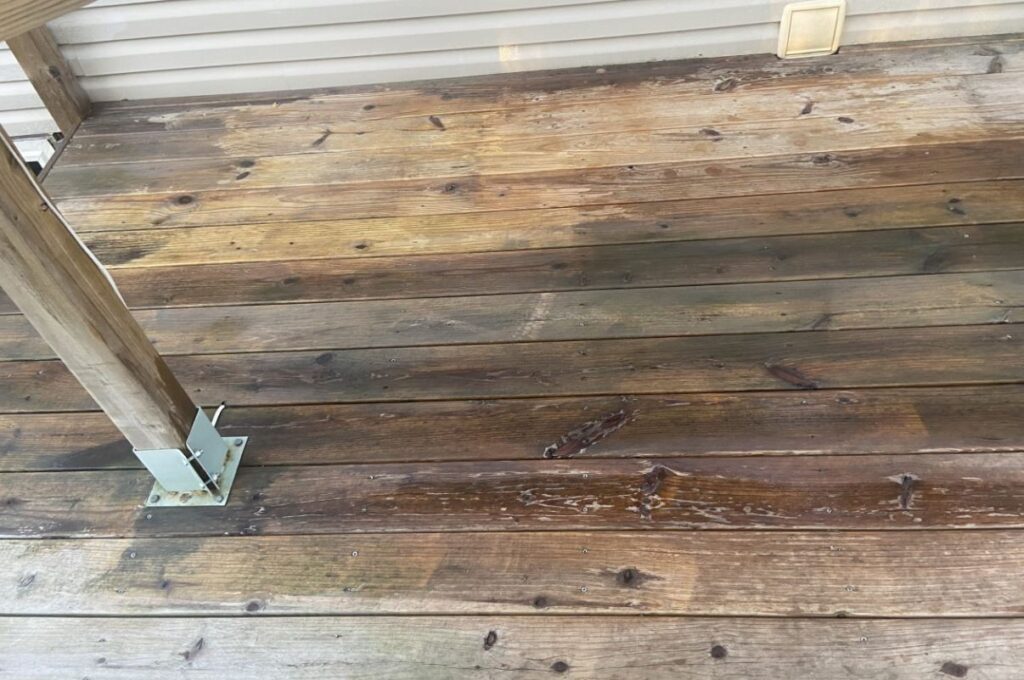
This cleaning method eliminates deep-seated grime and significantly refurbishes the deck, transforming it into a pristine outdoor space. By upgrading the deck's condition, high-pressure cleaning brings out the natural beauty of the wood or composite materials, making the deck look fresh and inviting. Removing algae, mould, and other contaminants enhances the aesthetic appeal and prolongs the deck's lifespan by preventing deterioration caused by these harmful elements.
Extends the Lifespan of Your Deck
Regular high-pressure cleaning can significantly extend the lifespan of your deck by preventing mould, mildew, and other damaging elements from affecting the wood's integrity.
By consistently removing dirt, grime, and debris build-up, high-pressure cleaning also plays a crucial role in reviving the appearance of your deck, and restoring its original beauty.
The deep cleaning action of the high-pressure method helps to recondition the wood surface, eliminate stubborn stains, and rejuvenate the natural colour of the wood.
High-pressure cleaning allows for the application of protective treatments that can further enhance the durability and resilience of the deck, shielding it from environmental factors and extending its longevity.
Enhances the Appearance of Your Outdoor Space
High-pressure cleaning not only cleans the deck but also enhances the overall appearance of your outdoor space, creating a welcoming and refreshed environment for outdoor activities.
This method effectively removes dirt, grime and stubborn stains from the deck's surface, revealing its natural beauty. You can restore the deck's original colour and texture by utilising high-pressure cleaning, making it look brand new.
The sealing process after cleaning provides a protective barrier against elements such as UV rays and moisture, prolonging the lifespan of your deck. Stripping away old finishes enables you to start afresh, customising the deck's appearance to suit your style and creating an inviting outdoor living area for leisure and entertainment.
Precautions to Take When Using High-Pressure Cleaning for Deck Restoration
Whilst high-pressure cleaning is effective for deck restoration, it is essential to take certain precautions to ensure the safety of nearby plants, furniture, and individuals during the cleaning process.
- Protective covers or shielding for delicate plants can safeguard them from the high-pressure water, whilst moving furniture to a safe distance can prevent potential damage.
Personal safety is paramount, so wearing appropriate gear like goggles and non-slip footwear is crucial to avoid accidents.
Regularly inspecting the deck for loose boards or nails before cleaning and ensuring proper drainage afterward can help maintain its condition for longer-lasting results.
Using the Right Pressure and Nozzle
Adjusting the pressure and selecting the appropriate nozzle for high-pressure cleaning are critical steps to ensure effective deck restoration without causing damage to the wood or surface.
Regarding pressure settings, it's essential to start low and gradually increase until you find the right balance of power for your specific deck material. This approach helps prevent gouging or splintering while still achieving a thorough clean.

For softer woods, such as cedar, lower pressure settings are typically recommended to prevent excessive erosion. Choosing the correct size and angle of the nozzle is equally important as it determines the spray pattern and impact on the surface.
Maintenance-wise, regularly inspecting your equipment for wear and tear, and cleaning the nozzles to avoid clogs can significantly extend their lifespan and ensure optimal performance.
Protecting Nearby Plants and Furniture
Shielding nearby plants and furniture from high-pressure cleaning involves covering delicate items, relocating potted plants, and creating a protective barrier to prevent damage during restoration.
To further ensure the safety of plants and furniture during deck refurbishment, it is advisable to prune any overhanging branches to avoid potential damage from the high-pressure water.
Using plant-safe cleaning solutions will help protect the vegetation from harmful chemicals.
When relocating potted plants, place them in a shaded area to shield them from direct sunlight and excess water exposure.
Creating a physical barrier with tarps or plastic sheeting can shield furniture and decorative pieces from overspray and debris.
Wearing Protective Gear
Before high-pressure cleaning, individuals should wear appropriate protective gear such as goggles, gloves, and protective clothing to shield themselves from debris and cleaning solutions.
It is crucial to ensure that all loose items are properly secured to prevent accidents during deck renovation. It's also advisable to inspect the work area for any potential hazards and create a clear plan for the renovation process.
Individuals should be well-versed in safely using the renovation tools and equipment to avoid mishaps. By prioritising personal safety measures and thorough preparation, individuals can enhance the overall experience of deck renovation and achieve successful results.
